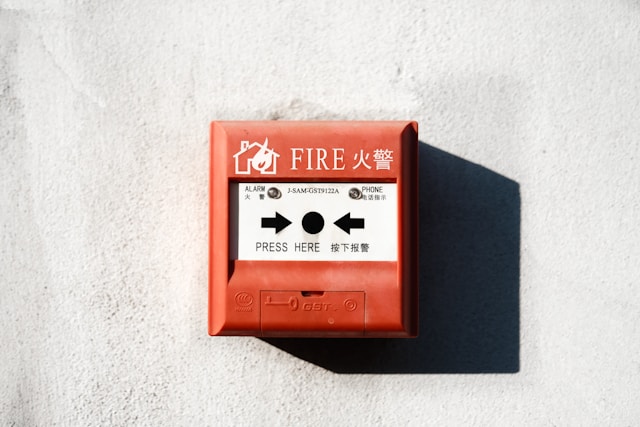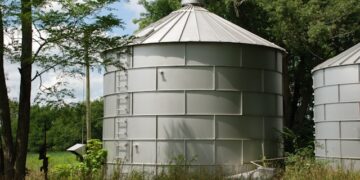Fire is one of the most devastating threats a homeowner can face. In just minutes, a small flame can grow into a life-threatening blaze, destroying property, endangering lives, and leaving emotional and financial damage in its wake. Fortunately, many residential fires can be prevented with basic awareness and planning. Whether you’re a new homeowner or just want to revisit your current safety plan, learning proper fire safety tips for homeowners is essential.
This guide outlines essential home fire prevention strategies, the importance of emergency preparedness, and practical steps you can take to protect your property and loved ones.
Install and Maintain Smoke Alarms
One of the most fundamental fire safety tips is installing smoke detectors in the right places throughout your home. Smoke alarms are your first line of defense, alerting you to danger long before you may see or smell smoke.
-
Install smoke alarms on every level of your home, inside each bedroom, and outside all sleeping areas.
-
Test them monthly to ensure they’re working.
-
Replace the batteries at least once a year, or when the alarm starts chirping.
-
For added safety, consider interconnected smoke detectors, so that when one goes off, they all do.
Smoke detectors in the home can reduce the risk of death in a house fire by more than 50%. Don’t underestimate their importance.
Keep Fire Extinguishers Handy
Having a working fire extinguisher within reach can make all the difference in containing a small fire before it spreads.
-
Place fire extinguishers in key areas: kitchen, garage, laundry room, and near any fireplace or heater.
-
Learn how to use one with the PASS method: Pull the pin, Aim the nozzle, Squeeze the handle, Sweep from side to side.
-
Check the pressure gauge monthly and have your extinguisher serviced as needed.
Understanding proper fire extinguisher use is part of every smart homeowner’s fire safety checklist.
Create a Fire Escape Plan
Every family should have a well-thought-out fire escape plan. In an emergency, confusion and panic can be deadly. A clear plan ensures that everyone knows what to do and where to go.
-
Identify two ways out of every room.
-
Designate a safe meeting spot outside the home.
-
Practice your escape plan twice a year with your household members.
-
Teach children how to open windows and recognize the sound of smoke alarms.
Knowing how to create a fire escape plan can save lives. Make sure everyone understands it, and don’t forget to include your pets.
Kitchen Fire Safety Tips
The kitchen is one of the most common places where fires start in a home. Fortunately, most kitchen fires are preventable with a few simple habits.
-
Never leave cooking unattended.
-
Keep flammable objects like paper towels, dishcloths, or wooden utensils away from the stove.
-
Use a lid or baking soda to smother grease fires never water.
-
Keep children and pets away from cooking areas.
Being aware of kitchen fire safety is critical, especially during holidays or busy family meals.
Electrical and Heating Precautions
Faulty wiring, space heaters, and overloaded outlets are frequent sources of residential fires.
-
Avoid daisy-chaining extension cords or plugging too many appliances into one outlet.
-
Have a licensed electrician inspect older wiring.
-
Keep space heaters at least 3 feet away from anything flammable.
-
Always turn off heaters and electric blankets when leaving the room or going to sleep.
Practicing proper electrical and heating precautions helps prevent fires from starting in the first place.
Safe Storage of Flammable Materials
Many homeowners store flammable products like gasoline, lighter fluid, or cleaning chemicals in their homes. While these materials are common, improper storage increases fire risk.
-
Store gasoline and propane in approved containers, outside the home if possible.
-
Keep flammable liquids in a cool, dry place away from heat sources.
-
Don’t store oily rags in a pile they can spontaneously combust. Place them in a sealed metal container instead.
Following safe storage practices for flammable materials adds another layer of home fire prevention.
Fireproof Your Home
Investing in fire-resistant materials and landscaping can reduce the spread and impact of a fire.
-
Use fire-retardant roofing and siding materials where possible.
-
Install spark arresters on chimneys.
-
Keep your yard clear of dry leaves, branches, and debris.
-
Trim tree limbs away from the home, especially in wildfire-prone areas.
Learning how to fireproof your home can help you safeguard against both internal and external fire threats.
Educate Children About Fire Safety
Fire safety education should start early. Children should know how to act in a fire emergency and how to avoid starting a fire accidentally.
-
Teach them “stop, drop, and roll” if their clothes catch fire.
-
Show them how to crawl low under smoke to avoid inhalation.
-
Store matches and lighters in locked cabinets or out of reach.
-
Use age-appropriate fire safety lessons and games to reinforce learning.
Helping your children understand basic fire safety for kids can prevent accidents and save lives.
Conclusion
Fire safety starts with awareness and is sustained through preparation. By implementing these fire safety tips for homeowners, you’re not just protecting your property—you’re safeguarding the lives of everyone under your roof.
Install and test smoke alarms, keep fire extinguishers within easy reach, create and practice a fire escape plan, and educate your family about the importance of residential fire safety. Small steps can make a big difference in preventing a disaster.









